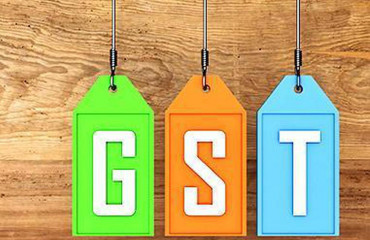
In response to a Rajya Sabha question from Shri Sanjay Seth, the Ministry of Finance provided details on GST collections and measures for small businesses. The Minister of State, Shri Pankaj Chaudhary, reported that the average monthly GST collection for the first quarter of the current financial year (FY 2025-26) was ₹1,80,774 crores, representing a 10.7% growth over the same period in the previous fiscal year.
In response to a Rajya Sabha question from Shri Sanjay Seth, the Ministry of Finance provided details on GST collections and measures for small businesses. The Minister of State, Shri Pankaj Chaudhary, reported that the average monthly GST collection for the first quarter of the current financial year (FY 2025-26) was ₹1,80,774 crores, representing a 10.7% growth over the same period in the previous fiscal year. While the ministry stated that sectoral data for growth is not maintained, it detailed several measures taken by the GST Council to assist small businesses. These include turnover-based exemptions from mandatory GST registration, the availability of a composition levy scheme for small taxpayers, and a quarterly return filing option for businesses with an annual turnover up to ₹5 crores. The minister also outlined administrative steps taken by the government to manage inflationary pressures, such as maintaining buffer stocks, strategic sales, and implementing import/export policies to stabilize prices.
GOVERNMENT OF INDIA
MINISTRY OF FINANCE
DEPARTMENT OF REVENUE
RAJYA SABHA
UNSTARRED QUESTION NO. 1047
ANSWERED ON 29/07/2025
Average GST collections
1047 SHRI SANJAY SETH:
Will the Minister of FINANCE be pleased to state:
a. the details of monthly average GST collections for the current financial year and the growth registered over the previous year;
b. the key sectors contributing to this growth in indirect tax revenue;
c. the measures taken by the GST Council to simplify the tax regime for small businesses; and
d. the steps being taken by Government and the RBI to manage inflationary pressures and ensure price stability?
ANSWER
THE MINISTER OF STATE IN MINISTRY OF FINANCE
(SHRI PANKAJ CHAUDHARY)
a. The average monthly net GST collection in Q1 of the current FY 2025-26 is Rs. 1,80,774 crores, which is 10.7% higher when compared to average monthly net GST collection in Q1 of the previous FY 2024-25 (Rs. 1,63,319 crores).
b. Sectoral data is not maintained.
c. A number of measures have been taken by the Government on the recommendations of GST Council for the benefit of small business sector which includes: –
(1) For trade facilitation, small and medium enterprises are not required to obtain GST registration: –
i. Persons involved in Intra-State taxable supply of goods, if his aggregate turnover in a financial year does not exceed Rs. 40 lakhs (Rs. 20 lakhs for certain special category states);
ii. Persons involved in Intra-State or Inter-State taxable supply of Services, if his aggregate turnover in a financial year does not exceed Rs. 20 lakhs (Rs. 10 lakhs for certain special category states)
(2) Composition levy scheme in GST is an alternate method of levy of tax designed for small and medium taxpayers whose turnover is up to the prescribed limit. A uniform rate of tax @1% (0.5% under the CGST Act and 0.5% under the respective SGST Act) is payable on supplies by traders of goods and manufacturers of goods and 2.5% under each Act for supplies by restaurants.
(3) All eligible registered person having annual turnover up to Rs. 5 crores in the preceding financial year may opt for filing of quarterly returns with monthly payment of tax.
(d) Series of administrative measures, including fiscal and trade policy, have been taken to control inflation and mitigate its impact including,
i. the augmentation of buffer stocks for essential food items;
ii. strategic sales of procured grains in the open market;
iii. facilitation of imports and export curbs during periods of short supply; and
iv. implementation of stock limits to push more supplies of select commodities into the market.
*****
